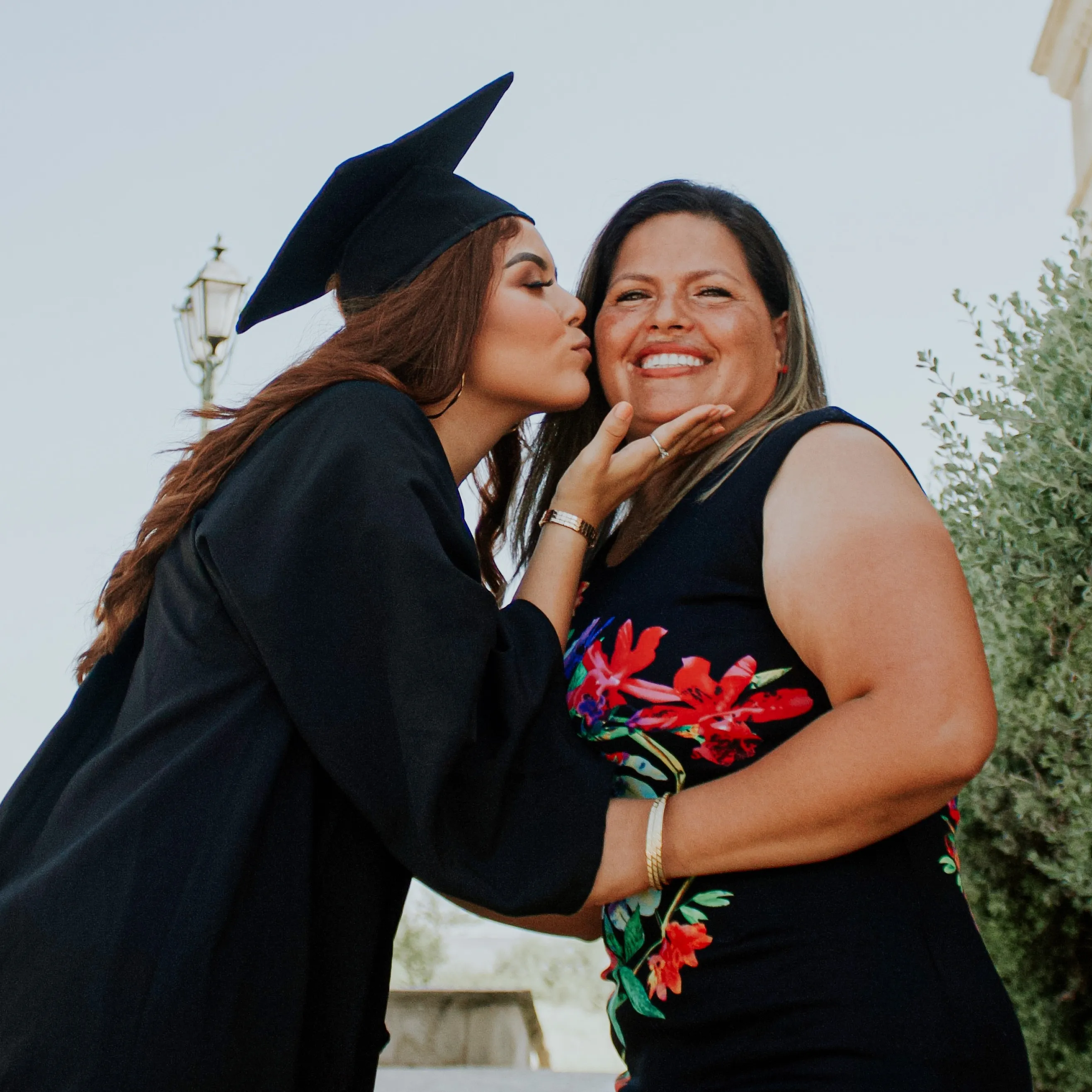Middle school is a rough time across the board. However, middle schoolers in recent years have faced an onslaught of additional challenges as the COVID-19 pandemic spread across the world. Though a year of virtual learning has mostly receded, schools and families struggle to help their middle schoolers catch up on the lost in-person instruction time.
However, one of the biggest challenges facing the education system is classroom size. Teacher workload is overwhelming as more faculty members choose to leave education altogether. So, why do we care about classroom size or the popular 'student-teacher ratios?' These two metrics provide valuable insight into a student's classroom experience. From individualized attention to hands-on learning and behavioral development, studies suggest that the benefits of smaller class sizes are far-reaching.
This guide decodes what you need to know about these popular education terms to help you better understand the importance of class size and student-teacher ratios on your child's education.
Student to Teacher Ratios: At A Glance
- What is 'Student-Teacher' Ratio? This is a measurement of the number of students for every teacher employed by the school (Public School Review).
- What Is the Average Student-Teacher Ratio in the United States? The average student-to-faculty ratio in U.S. public schools is 15.3 students per teacher (National Center for Education Statistics).
- What is the Average Classroom Size in Middle Schools? On average, middle school classes are 16.6 students in self-contained classes and 24.9 students in classes that rotate for departmentalized instructors (National Center for Education Statistics).
- What are the Benefits of Smaller Class Sizes? The benefits of smaller classes in the middle school grades often lead to higher levels of academic achievement and improved gains for low-income and minority students (Lydian Academy).
- How to Supplement Your Child's Education at Home? Helping your child maintain a regular schedule, encouraging curiosity and learning, and building healthy homework habits are some of the many ways to support your learning from home.
What is 'Student-Teacher' Ratio?
The Glossary of Education Reform defines 'student-teacher' ratio as the number of students enrolled at a specific school compared to the number of full-time or full-time equivalent instructors. Calculating this metric is simple—divide your school's total enrollment by the number of teachers. When you hear about an 18:1 student-teacher ratio, you know that there is one teacher for every 18 students enrolled at the school.
But why is this measurement important? Many researchers and education professionals rely on this number to evaluate the workload of each teacher and the allocation of school resources. This term has also migrated to politics and mainstream media when discussing students' school experiences.
However, it's important to note that lower student-teacher ratios are not an exact indicator of improved experience or academic achievement. This reasoning is because a school may not evenly assign students to instructors—even with a lower ratio, some classes may still have a larger than average class size.
How Was Student Performance Affected by COVID-19?
When 2020 hit, so too did an unprecedented decline in student performance. Some of the repercussions of the COVID-19 pandemic ranged from severe faculty shortages, higher than average student-teacher ratios, high rates of absent students, declined mental health, and more misbehavior. But one of the most concerning for lawmakers and education experts was the decline in student achievement, especially for students from low-income households (Brookings Institute).
It was also amid COVID-19 that caregivers began to look for ways to supplement their child's education. It was in 2020 that the education industry saw massive growth for online learning services like Learner. These online tutoring platforms have only increased in popularity; a recent study predicted that online tutoring will grow by $182.32 billion by 2026 (Technavio).
What Is the Average Student-Teacher Ratio in the United States?
On average, the student-teacher ratio in U.S. schools is 15.3:1 (Brookings Institute). However, this ratio varies widely from state to state, let alone grade to grade. California has one of the highest student-teacher ratios of 22:1. On the opposite end of the spectrum is Maine, with one of the lowest ratios of 11:1 (Public School Review).
The federal government does not mandate ratios for middle schools across the country. Rather, this decision lies with the states' educational systems. Alabama specifies an 18:1 ratio for all grade levels, whereas Maine requires no more than 25:1 for grades K-8. However, states like Colorado, Alaska, and New York do not specify a ratio cap for public schools in their education codes (Education Commission of the States).
What Is the Average Student-Teacher Ratio in Middle Schools?
The average student-teacher ratio is 15 students per teacher across all U.S. schools. This number looks at the number of students at a particular middle school compared to the number of full-time teachers or full-time equivalent teachers (think: substitutes, aides, teaching assistants). Higher ratios point to more students than full-time teachers, whereas lower ratios suggest more opportunities for one-on-one attention.
What Is the Average Classroom Size in Middle Schools?
U.S. middle schools have 16.7 students per self-contained classroom—essentially meaning that this one class stays with a given teacher for all subjects. However, if the students change instructors for each subject, the average middle school class jumps to 25.5 students.
For context, education researchers recommend aiming for an average class size of 20.5 or less. This number provides bandwidth for students to receive individual attention from instructors while also providing a beneficial social environment (NCES).
How Is the Student-Teacher Ratio (STR) Different From Class Size?
Student-faculty ratio (STR) is a measurement that compares the number of enrolled students to the number of teachers across an entire school. Education experts use this metric to evaluate the approximate workload of each teacher and resource allocation across a school's population.
Class size is more intuitive—this metric reports the exact number of students in a classroom. Experts often use this number to better understand a student's unique classroom experience since the number of students assigned to a teacher is accurately reported.
So, it's important to remember that a higher STR may not correctly reflect a student's lived experience. Here's why—middle schools with lower ratios may not evenly distribute their faculty across classrooms. Rather, some teachers may have larger classrooms, whereas instructors with specific expertise may only have small classes (Brookings Institute).
What Are the Benefits of Smaller Class Size?
Across the board, education experts agree that smaller class sizes are best for students regardless of their background, learning development, and other factors. Here are some of the primary benefits that come with fewer students per classroom.
Improved test scores
Classrooms with 18 students or less often lead to higher test scores and long-term academic achievement. This data point stood out most significantly, especially since it argued that students placed in smaller classes early in their education will consistently out-perform their peers in larger classes (Brookings Institute).
Significant gains for minority and low-income students
Smaller classrooms provide more individualized attention, which goes far for minority and low-income students. The main reasons all involve better access to the teacher—students are better able to interact with the instructor, more likely to participate in class, and the teacher can effectively manage behavioral issues (Public School Review).
Increased engagement and hands-on learning opportunities
Studies have continually linked small classes with increased student engagement, especially in urban middle schools. With fewer students, teachers can provide more hands-on learning and engagement opportunities, both of which boost the child's confidence, social skills, and material retention (Class Size Matters).
Improvements in student behavior
Small class sizes are easier to manage for a teacher, especially when it comes to the group's social dynamic. With this in mind, teachers can better enforce discipline and class rules and encourage supportive behavior among classmates. The disruptive behavior that has become prominent in the larger, post-pandemic classrooms clearly indicates this benefit (Brookings Institute).
Which Students Benefit the Most From Lower Student-Teacher Ratios?
Though students of all backgrounds benefit from lower STRs, some kids get more out of these smaller sizes than others. Here are three student groups that have shown to gain the most from lower ratios in the classroom.
Low-income
Education researchers have continually found a correlation between students from low-income homes and reduced average class size (Public School Review). Namely, these students show significant long-term academic success, such as lower drop-out rates. Since 10% of students from low-income homes drop out of school, the importance of small class sizes becomes paramount (National Dropout Prevention Center).
Minority students
Minority students show some of the greatest gains in smaller classes—data shows that the graduation rate for minority students was significantly higher at schools with lower STRs (Class Size Matters). In these smaller learning environments, personal attention from a good student-faculty ratio encourages students to participate and effectively learn based on their unique learning needs.
Students with learning challenges
In smaller classrooms, teachers can better cater to students with learning challenges. Not only does the teacher and student develop a stronger relationship, but the instructor can better understand what helps each student effectively learn and the extra materials that are most helpful (Lydian Academy).
How to Supplement Your Child's Education At-Home
Regardless of your school's student-faculty ratio, there are easy ways you can support your child's education at home. From online tutoring to distraction-free zones, here are four easy ways to support your child's academic success.
Build a daily school and homework schedule
A regular school and homework schedule is extremely helpful for middle school students. Not only will this help them to prioritize homework regularly, but it will lay the groundwork for good study habits for the remainder of their education. Of course, a balanced schedule doesn't necessarily mean prioritizing work above all else—giving your child time to unwind before going to bed helps improve their mental health and overall sense of well-being (Public School Review).
Let your child think through their questions and problems first
If your child asks for help on their homework, your gut reaction may be to tell them whether they're right or wrong. Instead, giving your student the space to think through possible solutions is crucial in boosting their retention of the information. One of the most helpful techniques is to talk through a problem with your students, allowing them to explain their thought processes (Public School Review).
Encourage reading and non-school education
The first thing your child likely does when getting home from school is screen time! Though this is great for helping kids to unwind, encouraging your child to read or find another educational activity can go far in improving their overall academic achievement (Public School Review).
Find additional learning support
There are more online tutors now than ever before. If your student is struggling in school, hiring a professional tutor may provide the additional help that the child needs. Some websites connect you to independent tutors for 300+ subjects, whereas platforms like Learner are an easy way to be paired with world-class math, science, or ELA tutor.
What Parents and Students Are Saying About Learner
Learner is one of the most well-respected online tutoring services for a reason. From highly qualified math and STEM experts to ELA and test prep tutors, Learner provides an easy way to get quality academic support.
This Learner customer said it best, "So professional and result oriented. I highly recommend Learner. My son has soared to great heights with the help of his tutor at Learner."
Why Trust Learner Tutors?
Learner is the most trusted platform for matching your child with an expert tutor. Here are some of the reasons why customers trust Learner tutors.
A custom-match math expert for everything you need to solve
Learner relies on an individualized approach to guarantee every student's success. The innovative platform asks all users to complete a one-minute assessment to learn about each student's needs, learning style, personality, motivation, and other personal requirements. Then, the platform's matching specialists hand-pick a math, STEM, ELA, or test-prep expert who can effectively provide the best academic support.
World-class tutors who are pedagogy experts
Each Learner tutor undergoes a rigorous application process to find only the most well-qualified online tutors. As important as their credentials, all subject-matter experts possess a contagious enthusiasm and passion for teaching. Learner seeks these qualities out in their many tutors, believing that pedagogy experts with the right people skills have the power to engage and inspire the next generation of learners.
Tutors customize lesson plans at your own pace and deliver in your learning style
Learners' customized approach to tutoring ensures that students feel empowered to learn at their own pace. These expert tutors develop personalized lesson plans built to let each student's strengths and learning style shine. Plus, the lesson plans are continually modified to reflect the student's progress toward their goals.
Beyond the subject matter, Learner tutors help define trajectories after the passing grade
Some tutoring businesses focus only on the subject matter. At Learner, tutors work with students to pursue excellence beyond the classroom. By providing a customized approach to learning, Learner strives to equip students with the curiosity, motivation, and skills for lifelong success.
Get Started with Learner Today
Learner can help connect you to the right tutor today regardless of the challenge your child faces. To get started, visit Learner.com to complete a one-minute assessment collecting basic information on your learning style, personality, and motivation. After reviewing your responses, Learner's team of academic advisors will contact you for a brief phone call to schedule your first session.
Frequently Asked Questions
There can be a lot of nuances and technicalities when it comes to student-faculty ratios and class sizes. Here are some of the most frequently asked questions to help you better understand these education terms.
What is the ideal teacher-student ratio?
Numerous experts have landed on 18:1 as the ideal student-teacher ratio. This ratio allows classmates to develop essential behavioral skills by interacting with their peers. Teachers can effectively manage classroom discipline while allowing time to address the learning challenges of individual students through one-on-one attention (Public School Review).
Why does class size matter?
Class size benefits the teachers and students equally. With reduced class sizes, teacher workload is reduced significantly, giving them time to address each student's learning style, provide classroom discipline, and adapt their lesson plans to their classroom's overall environment. Students also learn more in these settings, evidenced by higher test scores and long-term achievement (Brookings Institute).
Does reducing class size improve achievement?
Yes! Numerous studies have shown the positive effect of smaller classes on achievement. When compared to students in a larger class, students in small classrooms for multiple years show more significant long-term gains, especially in the later grades (Brookings Institute).
What is the maximum class size?
It depends on the state. At the federal level, there is no maximum class size mandated for middle school education. However, 36 states have their state codes regarding classroom sizes. For example, Alabama caps its classrooms at 18 students per teacher for all grade levels (Education Commission of the States).
How do you calculate the student-teacher ratio?
The math is simple—simply take the total number of students enrolled and divide this number by the total number of teachers or full-time equivalent faculty at the same school. The result will be the student-teacher ratio, or how many students per teacher, at the organization. A higher student-teacher ratio suggests that class sizes will be larger, whereas a low ratio points to fewer students per class.










